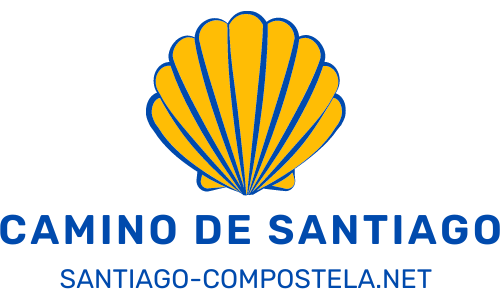Upon arriving in Santiago de Compostela, the pilgrims’ way traditionally leads to the Cathedral. This is where, for most of them, the Way ends.
Whenever you arrive at the Praza do Obradoiro in front of the Cathedral, you will meet pilgrims here sitting, chatting, contemplating, or just simply enjoying being together and sharing experiences with fellow pilgrims.
History of Santiago de Compostela
The name Santiago refers to the Apostle James the Greater (Sant Iago means ‘Saint James’). James, son of Zebedee and Salome and brother of Saint John the Evangelist, spent some years converting people on the Iberian Peninsula to Christianity. After returning to Palestine in 44 AD, he was beheaded by King Herod Agrippa I. The king forbade to bury him, but James’ two disciples, Theodore and Athanasius stole the body and brought it, in a sarcophagus of stone (or marble), across the Mediterranean Sea, to the Iberian coasts, into the port of Iria Flavia (which is present-day Padrón). They buried his body there in secret.
In 813, a hermit named Pelagius observed shooting star-like mysterious lights pointing to a wood. He reported this to the bishop of Iria Flavia, who went to the spot and discovered a tomb in which three bodies rested: Saint James and his two disciples. The field was consequently named campus stellæ, which means ‘field of stars’.
Getting a Compostela
The Compostela, the certificate attesting to the completion of the pilgrimage, can be obtained in the pilgrims’ office on Rúa do Vilar, only a couple of steps from the Cathedral. Pilgrims will be asked about their nationality, their motivation (religious, religious and cultural, or simply cultural), and their means of transport (foot, horse, bicycle).
Pilgrims’ Mass
The pilgrims’ mass is held in the Cathedral every day at noon. A priest reads out the countries of origin and starting towns of pilgrims who received the Compostela the day before.
The highlight of the mass is the swinging of the Botafumeiro, a thurible suspended from the dome, and pulled on ropes by eight men (the tiraboleiros), producing clouds of incense.
Eating out in the Hostal de los Reyes Católicos
All pilgrims possessing a Compostela are entitled to breakfast, lunch, or dinner at the Hostal de Los Reyes Católicos (on the Plaza Obradoiro), provided they are among the first ten to arrive. A royal decree dating back to 1524 ordered the former pilgrim hospital to provide pilgrims arriving in Santiago with three days’ lodging and three meals each day. The hospital has been turned into a Parador, so beds are not provided for free anymore, but the custom of giving free meals still remains.
If you want to try this experience, bring your Compostela and queue up in time at the garage gate (in Rúa das Hortas). Pilgrims are let in at 9:00 AM, noon, and 7:00 PM.
Santiago is not only the end of the Camino, but it is also the start of the Camino de Fisterra, which goes to the Atlantic Ocean (‘the end of the world’), about 90 kilometers from here.
Credentials can be obtained at the pilgrims’ office on Rúa do Vilar.
Accommodation in Santiago de Compostela
| Hotel name | Type | Price range | Room type | Other |
| Albergue SIXTOs no Caminho | Albergue | Budget | Family rooms, Shared rooms | Shared lounge, Non-smoking rooms Facilities for disabled guests, WiFi, Tea/coffee maker in all rooms, Luggage storage |
| Albergue Seminario Menor | Albergue | Budget | Shared rooms | Luggage storage, WiFi, Laundry room, Vending machines |
| Deniké Grupo Atalaia | Guest house | Mid-range | Private rooms | Breakfast included, WiFi, Non-smoking rooms, Lift, Bar |
| Hotel Alda Bonaval | Hotel | Mid-range | Private rooms | Breakfast included, Non-smoking rooms, Facilities for disabled guests, WiFi |
| Casas Reais Boutique | Guest house | Splurge | Private rooms | Breakfast included, Spa and wellness center, Bar, WiFi, Lift, Non-smoking rooms, Balcony |
Getting home
Airlines take pilgrims from Santiago de Compostela Airport to most major European cities. There is a train connection to most major Spanish towns along the Camino, and a bus connection to Portugal and other parts of Spain.
Catedral de Santiago
According to tradition, the cathedral was built on the exact place where the tomb of Saint James the Greater had been found. The construction took place between 1075 and 1122, with several halts. It was consecrated in 1128. Its plan is quite similar to that of the church of St. Sernin in Toulouse.
Arriving pilgrims traditionally give a hug to the bust of Saint James, and visit his tomb. The tomb can be found in a crypt under the main altar. Pilgrims usually have to queue up outside the Cathedral to see it.
The Puerta Santa (Holy Door) on the eastern façade is open only for holy years. Whenever St James’ day (25 July) falls on a Sunday, a holy year is declared. (The next holy year will be in 2027.) The privilege of holding a holy year dates from the 12th century and elevated Santiago de Compostela to the same holy city status as Rome and Jerusalem.
Pilgrims arriving during a holy year are granted a plenary indulgence. This is one of the causes for so many pilgrims setting out for Santiago de Compostela in holy years.
